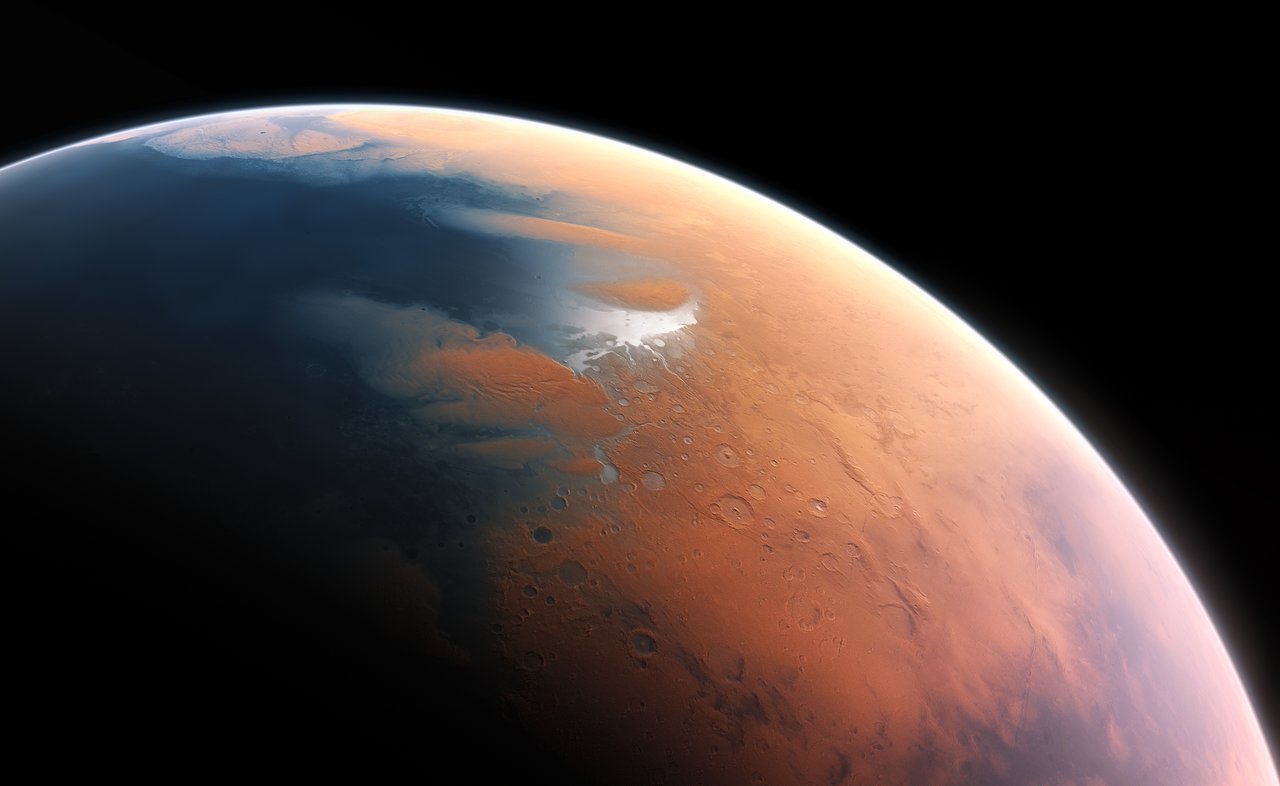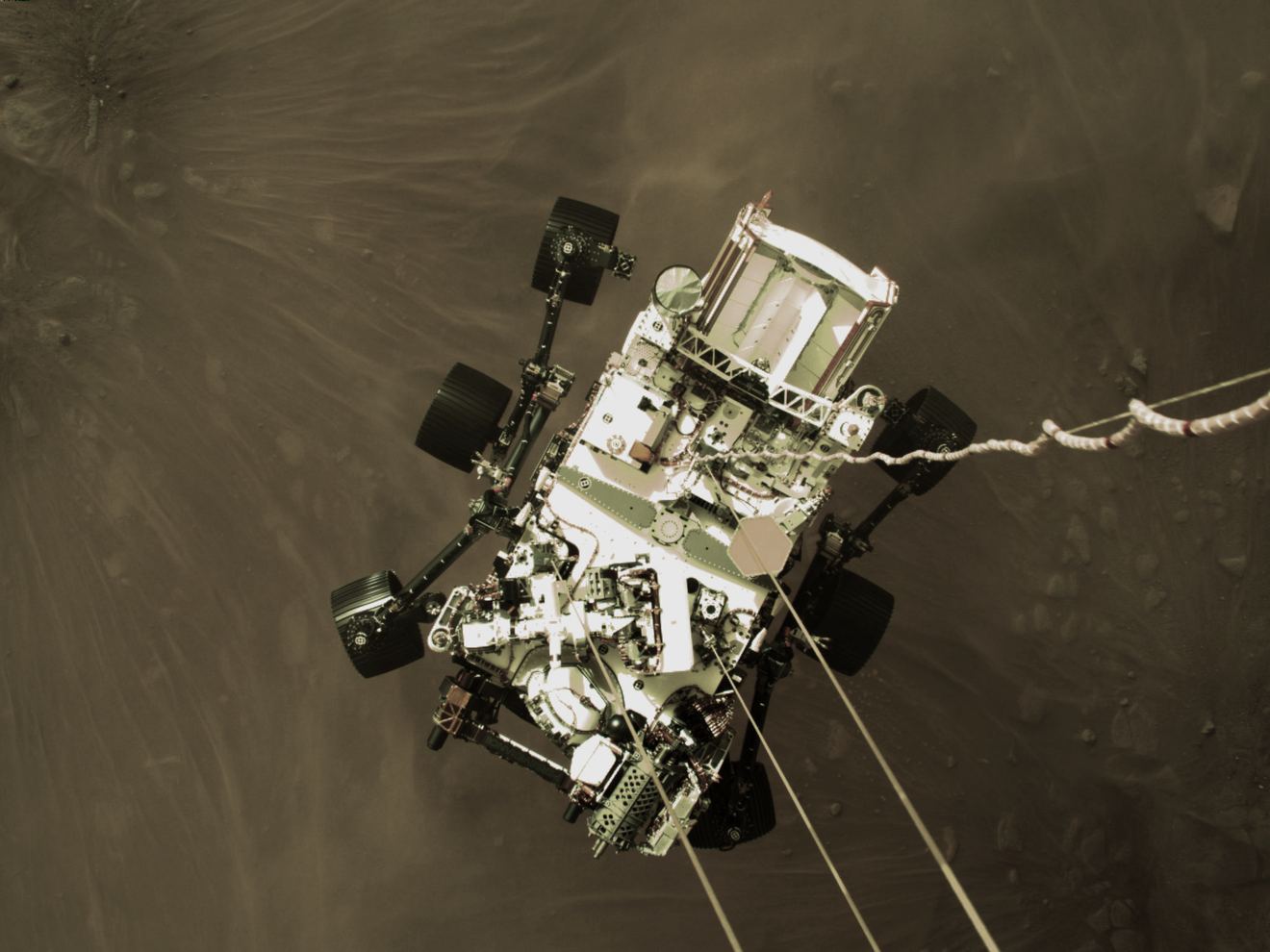In situ resource utilization (ISRU) is still a very early science. Therefore, the technology utilized in it could be improved upon. One such technology that created one of the most useful materials for ISRU (oxygen) is MOXIE – the Mars OXygen In-situ Resource Utilization Experiment. A small-scale model of a MOXIE was recently tested on the Perseverance last year. Its primary goal is to create oxygen out of the Martian atmosphere.
Continue reading “Mars Explorers are Going to Need air, and Lots of it. Here’s a Technology That Might Help Them Breath Easy”A Mars Meteorite Shows Evidence of a Massive Impact Billions of Years ago

Researchers at Australia’s Curtin University have discovered evidence of a massive impact on the Martian surface after 4.45 billion years ago. This may not seem like a surprising revelation – after all, we know that there were several large impacts on Mars, like Hellas and Argyre, and we know that large impacts happened frequently in the early solar system – so why is this a big deal?
Continue reading “A Mars Meteorite Shows Evidence of a Massive Impact Billions of Years ago”Curiosity Finds a Bizarre Rock on Mars that Looks Like a Flower

The Curiosity rover took a picture of something pretty enticing this week on the surface of Mars. While the object in question looks like a tiny little flower or maybe even some type of organic feature, the rover team confirmed this object is a mineral formation, with delicate structures that formed by mineral precipitating from water. The size of this tiny object is just 1 centimeter.
Continue reading “Curiosity Finds a Bizarre Rock on Mars that Looks Like a Flower”China Releases a Selfie-Stick Video of Tianwen-1 Above Mars
Selfies have become ubiquitous everywhere – even Mars. Now, the Tianwen 1 orbiter is getting into the spirit with a selfie taken high up in Martian orbit.
Continue reading “China Releases a Selfie-Stick Video of Tianwen-1 Above Mars”How Time Flies: Perseverance and Ingenuity Have Been on Mars for a Year
What a year it’s been — Earth year, that is!
The dramatic touchdown on Mars for the Perseverance rover and the stowaway Ingenuity helicopter on February 18, 2021 was a bright moment in a tumultuous year here on Earth. And even though the pandemic meant that many people were watching the event from home – even some of the Mars rover team – NASA made sure to share the event as widely as possible.
Here’s a video highlight of that day, with pictures and video from both planets, and watching it brings smiles, goosebumps tears of joy. Of course, the incredible video we received of the landing from from the rover itself – especially the sky-crane lowering Perseverance to the planet’s surface — is nothing short of stunning.
Continue reading “How Time Flies: Perseverance and Ingenuity Have Been on Mars for a Year”NASA and HeroX are Crowdsourcing the Search for Life on Mars

For almost sixty years, robotic missions have been exploring the surface of Mars in search of potential evidence of life. More robotic missions will join in this search in the next fifteen years, the first sample return from Mars (courtesy of the Perseverance rover) will arrive here at Earth, and crewed missions will be sent there. Like their predecessors, these missions will rely on mass spectrometry to analyze samples of the Martian sands to look for potential signs of past life.
Given how much data we can expect from these missions, NASA is looking for new methods to analyze geological samples. To this end, NASA has partnered with the global crowdsourcing platform HeroX and the data-science company DrivenData to launch the Mars Spectrometry: Detect Evidence for Past Life challenge. With a prize purse of $30,000, this Challenge seeks innovative methods that rely on machine learning to automatically analyze Martian geological samples for potential signs of past life.
Continue reading “NASA and HeroX are Crowdsourcing the Search for Life on Mars”Lasers Could Send Missions to Mars in Only 45 Days
NASA and China plan to mount crewed missions to Mars in the next decade. While this represents a tremendous leap in terms of space exploration, it also presents significant logistical and technological challenges. For starters, missions can only launch for Mars every 26 months when our two planets are at the closest points in their orbit to each other (during an “Opposition“). Using current technology, it would take six to nine months to transit from Earth to Mars.
Even with nuclear-thermal or nuclear-electric propulsion (NTP/NEP), a one-way transit could take 100 days to reach Mars. However, a team of researchers from Montreal’s McGill University assessed the potential of a laser-thermal propulsion system. According to their study, a spacecraft that relies on a novel propulsion system – where lasers are used to heat hydrogen fuel – could reduce transit times to Mars to just 45 days!
Continue reading “Lasers Could Send Missions to Mars in Only 45 Days”We Might Know Why Mars Lost its Magnetic Field

Mars is a parched planet ruled by global dust storms. It’s also a frigid world, where night-time winter temperatures fall to -140 C (-220 F) at the poles. But it wasn’t always a dry, barren, freezing, inhospitable wasteland. It used to be a warm, wet, almost inviting place, where liquid water flowed across the surface, filling up lakes, carving channels, and leaving sediment deltas.
But then it lost its magnetic field, and without the protection it provided, the Sun stripped away the planet’s atmosphere. Without its atmosphere, the water went next. Now Mars is the Mars we’ve always known: A place that only robotic rovers find hospitable.
How exactly did it lose its magnetic shield? Scientists have puzzled over that for a long time.
Continue reading “We Might Know Why Mars Lost its Magnetic Field”Mars Could Have Been wet for Much Longer Than Previously Believed
Billions of years ago, Mars was a much different place than it is today. During the same period when life was first emerging on Earth, Mars had a thicker atmosphere, warmer surface temperatures, and flowing water on its surface. Evidence of this warmer, wetter past is preserved on the planet’s surface today in the form of river channels, lakebeds, alluvial fans, and sedimentary deposits. When this period began, and how long it lasted, remains the subject of much debate for scientists.
Knowing how long this period lasted helps establish how big the window of opportunity was for life on Mars. But according to new NASA-funded research from the Sellers Exoplanet Environments Collaboration (SEEC), Mars may have been wetter longer than previously expected. According to recently published results in the Proceedings of the National Academy of Sciences, Mars may have had a northern ocean as recent as three billion years ago.
Continue reading “Mars Could Have Been wet for Much Longer Than Previously Believed”There are Places Where Salty Water Could Emerge Onto the Surface of Mars

The existence of water on Mars is a contentious subject. We know there used to be water on the surface of the planet, though it’s long gone now. We know there’s frozen water underground in the world, and we know there’s water vapour in the air. But life needs liquid water.
Could there be liquid water on Mars?
A new study shows how salty water could emerge from the atmosphere onto Mars’ surface under the right conditions.
Continue reading “There are Places Where Salty Water Could Emerge Onto the Surface of Mars”




